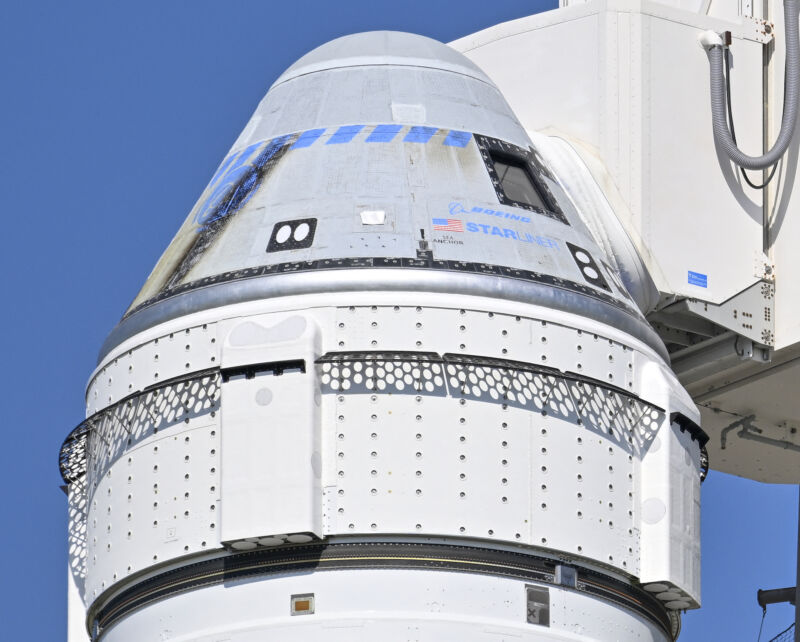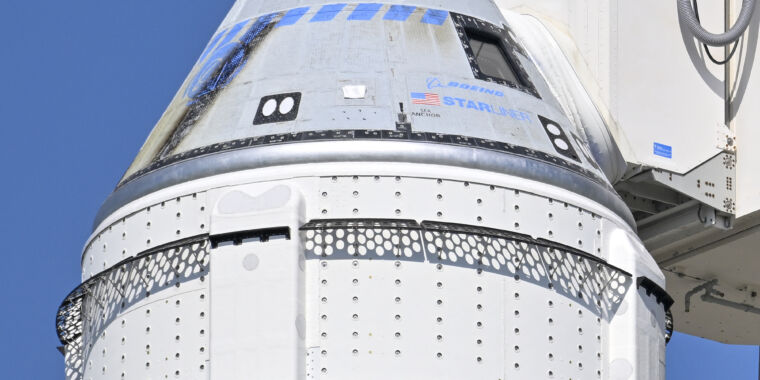
NASA is preparing for Boeing's Starliner spacecraft, which has been plagued by thruster problems and helium leaks, to depart the International Space Station as early as Friday, ending a disappointing test flight that casts doubt on the long-term future of the Starliner program.
Astronauts Butch Wilmore and Suni Williams, who boarded Starliner on June 5, closed the spacecraft’s hatch on Thursday in preparation for Friday’s departure. But it wasn’t what they had imagined when they left Earth aboard Starliner three months ago. Instead of closing the hatch from a position in Starliner’s cockpit, they closed the spacecraft’s forward door from the side of the space station at the docking port.
The Starliner spacecraft is scheduled to undock from the International Space Station at 6:04 p.m. EDT (22:04 UTC) on Friday. If all goes according to plan, Starliner will fire its braking rockets at 11:17 p.m. EDT (03:17 UTC) for a minute-long burn to achieve a parachute-assisted, airbag-suspended landing at White Sands Space Harbor, New Mexico, at 12:03 a.m. EDT (04:03 UTC) on Saturday.
The Starliner mission that was set to end this weekend was the spacecraft’s first test flight with astronauts, and was seven years behind Boeing’s original schedule. But technical problems with the spacecraft mean it won’t return home with the two astronauts who launched it into orbit in June, leaving some of the test flight’s objectives incomplete.
The outcome is undoubtedly a setback for NASA and Boeing, which must fix two major problems with Starliner’s propulsion system, supplied by Aerojet Rocketdyne, before the capsule can fly with humans again. NASA officials have not yet said whether they will require Boeing to launch another Starliner test flight before the spacecraft is certified for the first of up to six operational crew missions under Boeing’s contract.
A non-binding statement from NASA
For more than a decade, the space agency has been working with Boeing and SpaceX to develop two independent vehicles to ferry astronauts to and from the International Space Station (ISS). SpaceX launched its first astronaut-carrying Dragon spacecraft in May 2020, and six months later NASA gave SpaceX permission to conduct regular six-month space station crew rotation missions.
NASA officially scheduled Starliner's first operational mission for August 2025. But the agency set that schedule before realizing that Boeing and Aerojet Rocketdyne would need to redesign seals and possibly other elements of Starliner's propulsion system.
No one knows how long that will take, and NASA hasn’t yet decided whether Boeing will need to conduct another test flight before Starliner is formally certified for operational missions. If Starliner performs flawlessly after undocking and lands successfully this weekend, NASA engineers might be able to convince themselves that Starliner is ready for crew rotation flights once Boeing has fixed the problems with its booster and helium leaks.
In any case, the schedule for launching an operational Starliner crew flight in less than a year seems unlikely. In addition to deciding on another test flight, the agency must also decide whether to order more operational Starliner missions from Boeing. These “post-certification missions” would ferry crews of four astronauts between Earth and the ISS, orbiting the planet about 260 miles (420 kilometers) away.
NASA has only given Boeing “Authority To Proceed” for three of its six potential operational Starliner missions. This milestone, known as ATP, is a decision point in contracting jargon where the customer, in this case NASA, places a firm order for a product. NASA has previously said it awards these task orders about two to three years before a mission launches.
Josh Finch, a NASA spokesperson, told Ars that the agency has not yet made a decision on whether Boeing will fly additional operational missions beyond the three already planned Starliner missions.
“NASA's goal remains to certify the Starliner system for crew transportation to the International Space Station,” Finch said in a written response to questions from Ars. “NASA looks forward to continued collaboration with Boeing to complete certification efforts following Starliner's unmanned return. Decisions and timing for issuing future authorizations are on the horizon.”
That means NASA’s near-term focus is on certifying Starliner so Boeing can begin fulfilling its commercial crew contract. The space agency has not yet determined when or if it will give Boeing permission to prepare for Starliner missions beyond the three already on the books.
When NASA awarded commercial crew contracts to SpaceX and Boeing in 2014, the company committed to buying at least two operational crew flights from each company. The first contracts, a decade ago, included options for as many as six crew rotation flights to the ISS after certification.
Since then, NASA has extended SpaceX’s commercial crew contract to cover a whopping 14 astronaut Dragon missions, with SpaceX having already launched eight. The primary reason for the contract extension was to meet NASA’s crew transportation needs following delays with Boeing’s Starliner, which was originally scheduled to alternate with SpaceX’s Dragon for human flights every six months.

